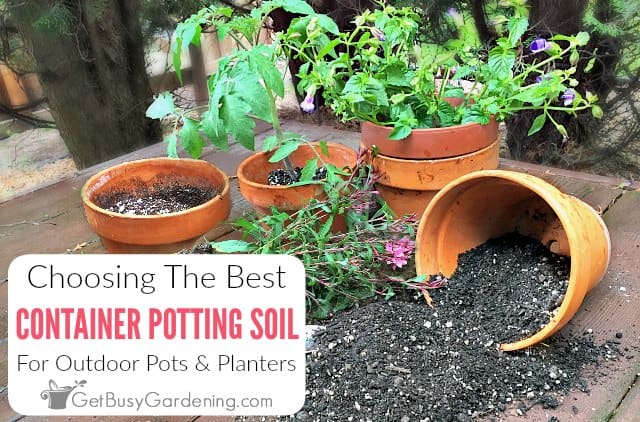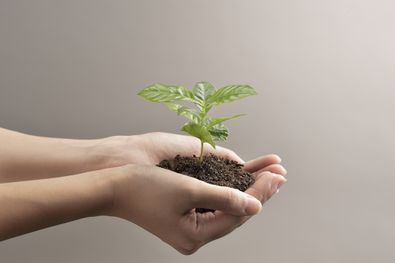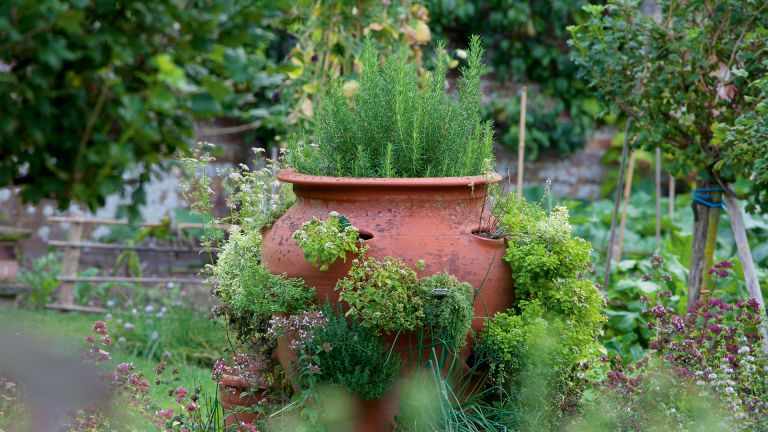
You must first understand the components of hydroponics gardening. These components are crucial in the operation of a hydroponic gardening system. Here we will cover a few. Also, you should be familiar with the Nutrient film technique and the Dutch bucket system. We'll also be explaining the differences between each type. And last but not least, we'll take a look at how Hydroponics is different from conventional gardening.
Aeroponics uses nutrient-rich aerosol
In aeroponic gardening, roots are suspended in nutrient-rich aerosol and are exposed to oxygen and air. They absorb water and nutrients from the air, which is sprayed onto them. A hydroton clay ball, or coco-coir soil substitute, supports the root system. The reservoir water is treated with low strength hydrogen peroxide. During the process of growing, roots are placed in an empty chamber. They are then exposed to air and nutrient rich aerosol.
Aeroponic hydroponic systems are more efficient and sustainable than traditional hydroponic systems. The plants can also be transplanted easily. They also don't suffer from diseases and pests that can infest a traditional hydroponic system. A typical enclosure for an aeroponics system eliminates the need to use chemicals to control pests and weeds.
The challenge of using an aeroponic system involves being extremely precise and meticulous. You must follow certain parameters to ensure that the water has the right amount of nutrients. Even the slightest malfunction of the equipment could ruin your harvest. It is important to make sure that you only sprinkle the water once every two minutes or your roots could become dry. Also, you must make sure to clean the misters often, as mineral deposits in water can clog them.
Aeroponics systems are a good way to give nutrients and oxygen directly to plant roots. Aeroponics systems reduce the amount of soil required, allow the plant to grow more quickly, and encourage cloning. Aeroponics systems also require less space than traditional hydroponic systems. They provide exceptional yields and growth rates. There are many types of aeroponics systems on the market, including low-pressure and vertical systems.
Dutch bucket system
It is easy to create your own hydroponic gardening garden. You will only need the Dutch bucket system to create your hydroponic garden. The Dutch bucket should not be made out of light material to stop algae growth. Proper bulkhead fittings are required, as well as 8mm industry-standard barbed-nipples. Moreover, you should install shut-off valves to isolate plants when necessary.
Start by measuring the space where your growing medium will be placed. Based on how many buckets are you planning to place, cut half-inch of poly tubing. Next, connect your buckets to the drainpipe. Then install feeding tubes with emitter holes. Now you can start building your hydroponics system.
The Dutch bucket system for hydroponics has the main advantages of being low-cost and easy to construct. It does not require complex hose-fittings, and has a central reservoir. This hydroponics system has another benefit: you only need to fill it one time, which can save you lots of time and money. You should make sure that your water source and reservoir are clean if you're using this method. A too acidic or alkaline solution will not benefit your plants, so you should maintain a healthy pH balance for your reservoir.
The Dutch bucket system is an ideal solution to hydroponic gardening. It allows you to grow large plants in small spaces. The water-based solution flows from a dedicated reservoir and drips into the buckets. After a bucket is filled, the excess solution drains into the reservoir. This irrigation system may have several buckets. Additional solution can then be pumped out via a drainage line connected to each bucket.
Nutrient-film technique

Hydroponic gardening's nutrient-film method involves covering the roots with a nutrient mixture. This technique was once considered the ideal growing method because it offered optimal control over watering. However, it was difficult to devise optimization plans due to the lack of substrate. This technique can only be used for a very small number of crops. These are the benefits and drawbacks to this technique.
The Nutrient-film technique in hydropnic gardening involves ensuring that a thin layer of nutrient solution flows over the roots, keeping them dry while allowing them to receive sufficient oxygen. This technique is most effective for light, fast-growing plants and those that don't need too much support. It is not recommended that top-heavy plants use this technique. They won't grow as tall when they are in soil.
Hydroponix's Nutrient-film method is the simpler of the two. The roots of plants are grown on the surface of the nutrients solution by filling a shallow channel with nutrient solutions. The microclimate created by the flow of nutrients solution over roots creates healthy and strong plants. It's easy to use and can be used by both novice and experienced growers.
The nutrient-film technique is one the key principles of hydroponics. It works by using a channel with sloped sides that pumps water through. The water in this channel gives water to the plants. However, the solution also contains nutrients. This setup is similar in concept to the Ebb and Flour method, but it uses water pumps.
NFT system
NFT systems use a reservoir in a grow tray with both a pump at top and drain pipe at bottom. It is also possible to use an air stone within the reservoir that is connected to an external pump. This is essential because plants will get the most nutrients from the water they grow in. Unfortunately, the NFT system doesn't have an automatic timer. If you can't turn the pump off or are unable to power it down, the pump will run continuously.
When growing in an NFT system, air stones are not necessary as the water levels should stay low so that the roots can get oxygen. An air pump is used to provide oxygen to the water in order to prevent root rot. The slope of a nutrient reservoir should allow for water flow. A timer is used to control the pump's timing. The water in your grow channel should be sloped to prevent water from splashing.
The NFT system is most suitable for growing a variety of lightweight, fast-growing plants. Lettuce is one popular example. Flandria is a popular variety. People have had success growing perennial plants like strawberries in an NFT. A separate trellis may be more cost-effective if you're looking to grow larger crops.
NFT can be used by both beginners and professionals. This method is highly nutrient-rich, easy to maintain, and sustainable. You can also use this system to grow herbs and strawberries. The NFT system has several benefits:
Ebb and flow system

You can grow plants using hydroponics' ebb-and-flow system. This system provides oxygen and nutrients to plants while also reusing your nutrient solutions. It is also very economical because your nutrient solutions are continually recycled. The ebb & flow system can be intimidating for beginners. However, with some practice you'll soon be able to grow vegetables, herbs, fruits, and other plants in no time.
You can use a rockwool or perlite mixture to grow plants. Coco coir, however, is another option. Hydroponics does not require soil to retain moisture. However, soil can provide roots with the same amount oxygen as hydroponics. Although a fluorescent "growstick", which costs less than $25, will not produce lush growth. Ideally, you should choose a 200-watt bulb.
It is important to consider the diameter of the tubing used when choosing an Ebb flow. For a 3/4-inch fitting you will need tubing at least one half inch thick. You can also use an appropriate substrate for your growing medium. If you're using rockwool, consider buying a Growcube or Coco Boss block. Perlite mixtures can also be used in pots or grow cups. You can also use hydroton in a pot.
Ebb flow is easy to set-up. Two separate containers are used: one plastic bucket is placed in the flooding plate and the pump carries the nutrients from the reservoir to your tray. You can even use multiple buckets to improve growth, depending on what your plants need. A timer can be used to automatically adjust the levels in both buckets if you don’t have enough space.
FAQ
How do you prepare soil for a vegetable gardening?
It's easy to prepare the soil for a vegetable gardening. You must first remove all weeds from the area you wish to plant vegetables. Next, add organic matter like composted manure and leaves, grass clippings or straw. Then water the plants well and wait for them to sprout.
Which seeds can be planted indoors?
A tomato seed makes the best seed for indoor planting. Tomatoes are very easy to grow and produce fruit year-round. You should be cautious when putting tomatoes into pots. Planting too soon can cause soil to dry out and root rot. Plant diseases like bacterial disease can quickly kill plants.
What is the difference between aquaponic gardening or hydroponic?
Hydroponic gardening makes use of nutrient-rich water rather than soil to grow plants. Aquaponics uses fish tanks to grow plants. It's like having your farm right in your home.
Can I grow fruit trees inside pots?
Yes! Fruit trees can be grown in pots if you're short on space. You should make sure that your pot has drainage holes to keep excess moisture from rotting the tree. You should also ensure that the pot is deep sufficient to support the root ball. This will keep the tree from becoming stressed.
What is the best vegetable gardening layout?
Your location will determine the best layout for your vegetable garden. Plant vegetables together if your house is in a busy area. If you live in rural areas, space your plants to maximize yield.
Statistics
- It will likely be ready if a seedling has between 3 and 4 true leaves. (gilmour.com)
- Most tomatoes and peppers will take 6-8 weeks to reach transplant size so plan according to your climate! - ufseeds.com
- According to a survey from the National Gardening Association, upward of 18 million novice gardeners have picked up a shovel since 2020. (wsj.com)
- Today, 80 percent of all corn grown in North America is from GMO seed that is planted and sprayed with Roundup. - parkseed.com
External Links
How To
How to plant tomatoes
To plant tomatoes, you need to have a garden or container. Planting tomatoes takes patience, love and care. There are many varieties of tomato plants available online or in your local store. Some varieties require special soil, while others do not. The most common type of tomato plant is a bush tomato, which grows from a small ball at its base. It's easy to grow and very productive. Start growing tomatoes by purchasing a starter kit. These kits can usually be found in garden shops or nurseries. These kits include everything you need to get started.
There are three main steps in planting tomatoes.
-
Choose a location where you want to place them.
-
Prepare the ground. This includes digging up dirt, removing stones, weeds and the like.
-
Place the seeds directly onto the prepared ground. After placing the seeds, be sure to water well.
-
Wait for them to sprout. Next, water them again. Wait for the first leaf to emerge.
-
The stems should be able to reach 1 cm (0.42 inches) before being transplanted into larger pots.
-
Continue to water every day.
-
When they're fully ripe you should harvest the fruits.
-
Fresh tomatoes can be eaten right away, or stored in the fridge.
-
Each year, repeat the process.
-
Before you start, read every instruction.
-
Have fun growing your tomatoes!